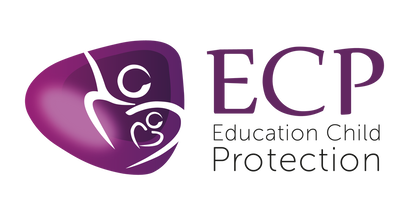Building Digital Resilience
As parents it is our natural instinct to want to protect our children from the dangers presented to them on and offline. Our landscape of social media usage, gaming and screen-time has ever increased over the past year due to our current pandemic. Our message a year ago was somewhat very different to what it is now. We would have advised that screen-time should be kept to a minimum and encouraged face-to-face social interaction. However, over the past year this has been really difficult. Children are spending sometimes a minimum of 6 hours a day in front of their devices solely to interact with their peers and engage in their education. This doesn’t take in to account the additional time then spent having ‘fun’ with their friends online of an evening and weekend.
When we take a step back and start to add up the hours spent online in front of a device, it is considerably high. It’s not until the past few weeks we’ve seen a reduction in time spent using devices as our children have returned to face-to-face education.
We often have parents expressing concerns over their child’s 'addiction' to social media and what advice we would give regarding this. Often our advice or signposting depends on the context of a parent’s concern and the child’s activity and interaction.
However what we would encourage is for you to concentrate on their digital media usage, rather than for how long they are using it.
Top Tips…
There are some simple tips we would like to share with you to support you in your parenting journey to help build and scaffold children in being digitally resilient.
Being Digitally Literate.
To help prevent harm coming to your child online you need to educate them on how to be digitally literate. Most risks online come back to self-affirmation. We all want to feel liked and wanted whether that’s on or offline. You need to ask your child to consider the following;
Social Media Posts & Self-Affirmation.
Who are they posting statuses, stories, videos or live streams for? What is the reaction they would like from their post? What reactions do they anticipate to get? Are they posting on social media for themselves or is it actually for others to view? These are important things to consider because when they start to think about the reasons for posting, it might make them change their content. Why is content so important, well that’s because we want children to think about their ‘Digital Tattoo’, ‘Digital Branding’, or as adults often refer ‘Digital Footprint’.
Digital Tattoo.
Everything we do online leaves a trace. Even if we are to delete content who’s to say that someone else hasn’t taken a screenshot to keep or share. Sometimes we don’t consider the impact this might have later on in life. This is especially important for children. Their online behaviour as a child could impact their future career and other opportunities.
File Sharing Networks.
We’ve seen a rise in the cost to Netflix and subsequently children are using data sharing networks to stream films. What people often don’t realise is that these sites allow viruses to hack software and even webcams of a device. This then allows criminals to record footage through a webcam unbeknown to the user simply because they tried to watch a film for free as an alternative to Netflix. This footage can then be used against the person as blackmail, and we’ve seen individuals fall victim to sextortion. We would also encourage children to cover their webcams with paper. More importantly don’t allow your child to use their device in their bedrooms or any space unsupervised as this encourages risk taking behaviour sometimes by the child, but also provides opportunities for criminals to groom and exploit.
Starting a conversation is important. We all have busy lives, but having a level of transparency and interest in your child’s life allows you to gain perspective and to ascertain behaviours and risk assess. However, don’t limit your conversation to just online. Find out their interests and if you don’t understand a game or app, trend or challenge ask them to show you. Balance your interest in their online activities with space to be independent in a controlled way.
Parental Controls.
You can allow your child independence online but still supervise their online activity. Parental controls can enable you to make sure that the content your child engages with is age appropriate, whilst also allowing them the chance to still participate in games and activities their peers might be using safely. Most games and apps now have parental guidance information available, and this provides you an opportunity to understand how a platform works. A really good website to use to understand enabling parental controls is ‘Internet Matters’.
Scaffolding…
Giving your child the freedom to explore online doesn’t mean being a completely hands-off parent.
We would encourage children to understand how to use technology. By children understanding how a platform works, including privacy settings and where to report concerns online, enables them to be technically literate.
In addition, children developing their media literacy. Being able to identify and understand the reliability of an online source. As well as social literacy often referred to as netiquette, understanding acceptable behaviours online.
Sometimes children may have negative experiences online such as being bullied, groomed, exploited, or exposed to other risk-taking behaviours. What is important is that these experiences are addressed and learnt from. It is absolutely acceptable to set boundaries with children. We also need children to be able to identify what risks they may be presented with online, where to go for support, how to report their concerns on and offline and how they can recover and get back online in a safe and responsible way.
It’s better to encourage them to use their own judgement based on the boundaries you have discussed and set out.
There are some simple tips we would like to share with you to support you in your parenting journey to help build and scaffold children in being digitally resilient.
Being Digitally Literate.
To help prevent harm coming to your child online you need to educate them on how to be digitally literate. Most risks online come back to self-affirmation. We all want to feel liked and wanted whether that’s on or offline. You need to ask your child to consider the following;
Social Media Posts & Self-Affirmation.
Who are they posting statuses, stories, videos or live streams for? What is the reaction they would like from their post? What reactions do they anticipate to get? Are they posting on social media for themselves or is it actually for others to view? These are important things to consider because when they start to think about the reasons for posting, it might make them change their content. Why is content so important, well that’s because we want children to think about their ‘Digital Tattoo’, ‘Digital Branding’, or as adults often refer ‘Digital Footprint’.
Digital Tattoo.
Everything we do online leaves a trace. Even if we are to delete content who’s to say that someone else hasn’t taken a screenshot to keep or share. Sometimes we don’t consider the impact this might have later on in life. This is especially important for children. Their online behaviour as a child could impact their future career and other opportunities.
File Sharing Networks.
We’ve seen a rise in the cost to Netflix and subsequently children are using data sharing networks to stream films. What people often don’t realise is that these sites allow viruses to hack software and even webcams of a device. This then allows criminals to record footage through a webcam unbeknown to the user simply because they tried to watch a film for free as an alternative to Netflix. This footage can then be used against the person as blackmail, and we’ve seen individuals fall victim to sextortion. We would also encourage children to cover their webcams with paper. More importantly don’t allow your child to use their device in their bedrooms or any space unsupervised as this encourages risk taking behaviour sometimes by the child, but also provides opportunities for criminals to groom and exploit.
Starting a conversation is important. We all have busy lives, but having a level of transparency and interest in your child’s life allows you to gain perspective and to ascertain behaviours and risk assess. However, don’t limit your conversation to just online. Find out their interests and if you don’t understand a game or app, trend or challenge ask them to show you. Balance your interest in their online activities with space to be independent in a controlled way.
Parental Controls.
You can allow your child independence online but still supervise their online activity. Parental controls can enable you to make sure that the content your child engages with is age appropriate, whilst also allowing them the chance to still participate in games and activities their peers might be using safely. Most games and apps now have parental guidance information available, and this provides you an opportunity to understand how a platform works. A really good website to use to understand enabling parental controls is ‘Internet Matters’.
Scaffolding…
Giving your child the freedom to explore online doesn’t mean being a completely hands-off parent.
We would encourage children to understand how to use technology. By children understanding how a platform works, including privacy settings and where to report concerns online, enables them to be technically literate.
In addition, children developing their media literacy. Being able to identify and understand the reliability of an online source. As well as social literacy often referred to as netiquette, understanding acceptable behaviours online.
Sometimes children may have negative experiences online such as being bullied, groomed, exploited, or exposed to other risk-taking behaviours. What is important is that these experiences are addressed and learnt from. It is absolutely acceptable to set boundaries with children. We also need children to be able to identify what risks they may be presented with online, where to go for support, how to report their concerns on and offline and how they can recover and get back online in a safe and responsible way.
It’s better to encourage them to use their own judgement based on the boundaries you have discussed and set out.




